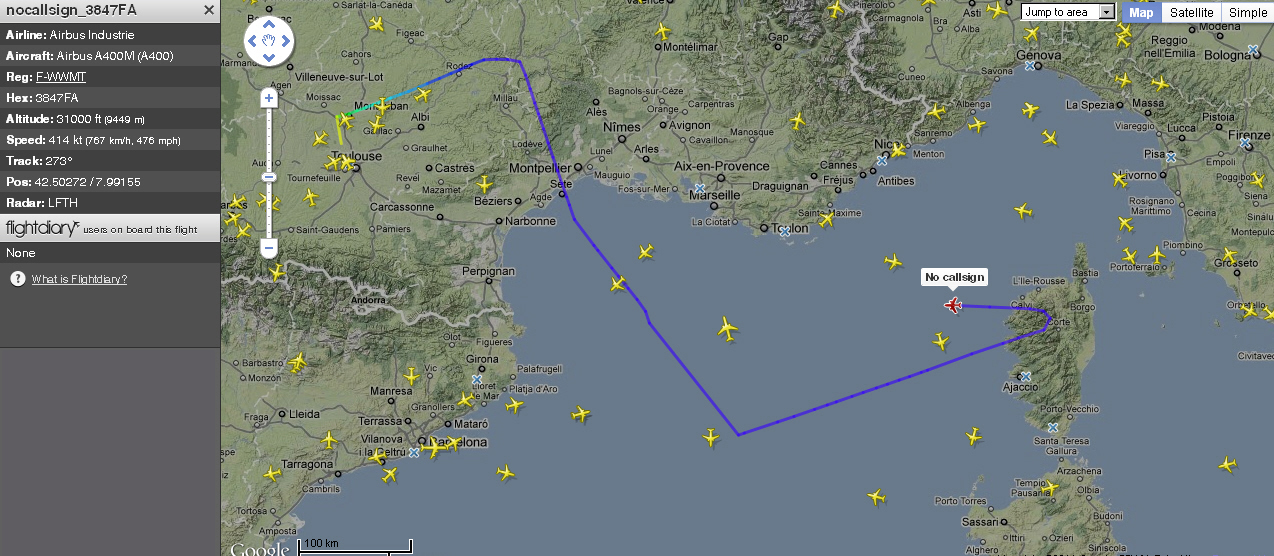On Aug 20, at 14.45LT a Spanair flight JK5022, from Madrid-Barajas to Las Palmas (Gran Canarias), crashed shortly after take off from runway 36L. The MD82 (EC-HFP) had 164 passengers and 9 crew on board; 153 died in the accident. As soon as the first news agencies began reporting that the aircraft caught fire during take-off maneuvers because of an engine problem, I was immediately asked from many people, how an engine fire on the ground could destroy an airplane causing so many fatalities.
I answered that, in my opinion, unless the aircraft had collided with “something” (another plane, a truck, a building), a “simple” engine fire on the ground could not be so catastrophic. A departing aircraft is loaded with much fuel and so vulnerable to fire, but if it hasn’t taken off yet, there’s plenty of time to disembark people, to extinguish fire, to request firefighters intervention, etc, before the aircraft explodes.
In fact, it was later explained, the aircraft was actually taking off, meaning that the engine exploded or caught fire when the MD-82 was already some 200 feet above the runway.
What could have happened then? Impossible to say now, since no clear details explaining the crash itself have been provided by the Spanish authorities. What I can say and what I think is that loosing an engine during take off is not a good news for a pilot, even if it is one of the emergencies he’s been trained to face and he has many chances to manage it a bring the plane safely back on the runway. If an emergency, like an engine fire or an engine flame out (caused for example by a birdstrike or a FOD, Foreign Object Damage), occurs after V1, the calculated decision speed, the aircraft can’t abort take off and has to continue the take off procedure. He couldn’t stop the aircraft using full brakes and would overrun the runway. So he continues the take off and will assess the situation once airborne. We obviously don’t know if the aircraft experienced the problem before or after V1. This could be an interesting information to know. According to some witnesses, the plane took off, then after climbing a few hundred feet (500 feet was speculated), passengers heard an explosion and the aircraft began to fall. There are in fact another couple of important speeds in aviation: the VR, rotation speed, at which the pilot rotates the aircraft, and V2, safety speed, the one that ensures the aircraft will continue the take off even with a single engine. At 500 feet (even at 200 ft), the aircraft has already reached the V2 and is still flyable in case of engine failure.
If an explosion occurred at low altitude, it may have put the airplane into a nose-high attitude causing a stall (T-tails, like the MD80s have poor stall recovery characteristics). However, basing on the information known so far, I couldn’t imagine why the aircraft could react with a pitch-up to an engine loss. What is more likely to happen and it is always trained in simulator session is a violent yaw caused by asymmetric thrust. The MD82 has both engines located in the rear part of the fuselage: should an engine fail, it can be still flown (aircraft like B767 and 777 with wing mounted engines, would react more violently to asymmetric thrust, even if the DC9 and MD80s seems to be very aggressive to asymmetric thrust, just like other aircraft). Obviously, if the asimmetric situation happens during take off, unless the engine explosion causes other damages to other aircraft systems (hydraulic system for example) the possibility to survive depends on the reaction speed of the pilot. He has to apply the emergency procedure (and yaw correction) as soon as possible. Above all he has to apply the right correction, meaning that he has to understand in a split second which engine failed and how to use the rudder to prevent yaw and roll that could be unrecoverable. I don’t know what happened to flight JK5022, but human factor could be a contributing cause, according to the few information surfaced so far.
Copyright © 2024 | MH Magazine WordPress Theme by MH Themes
Contents of this blog/website may not be used without author's prior written permission. All rights reserved.



